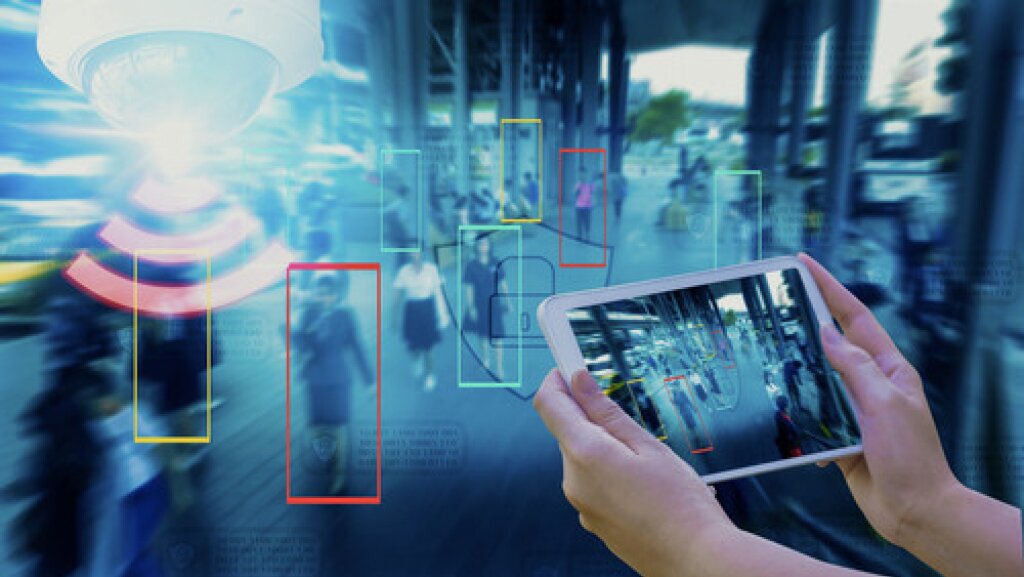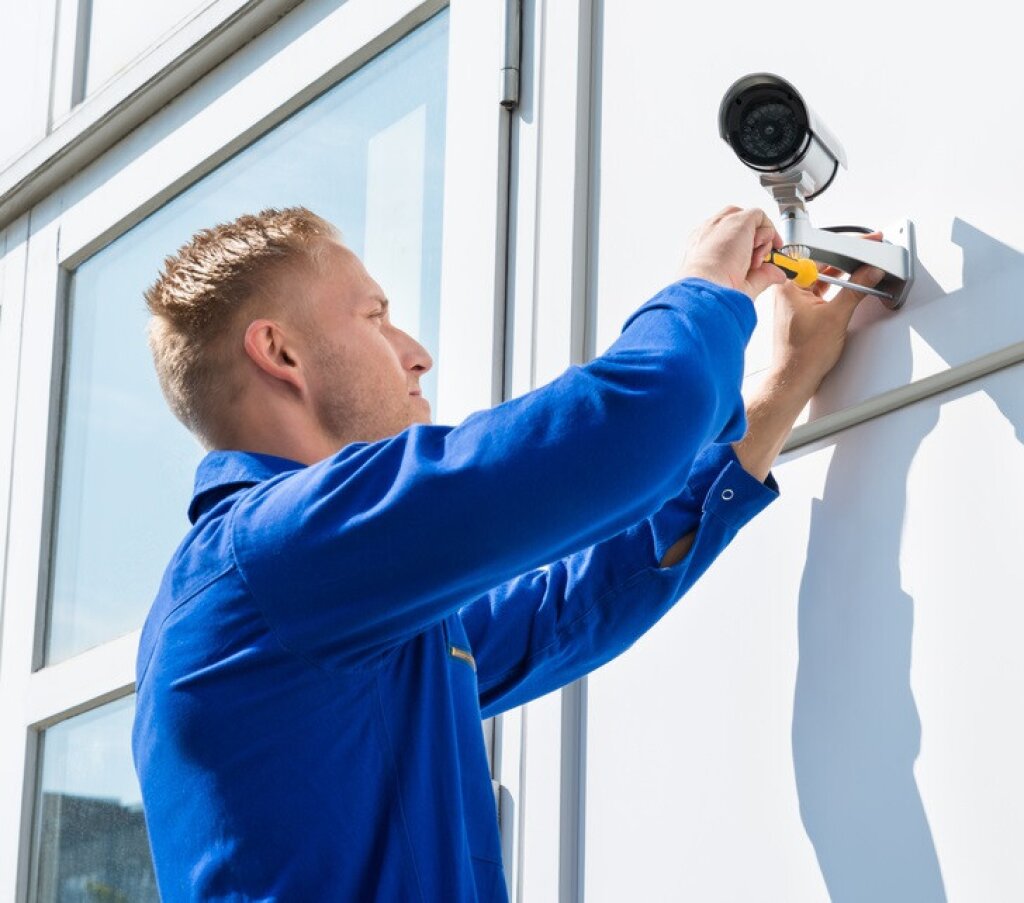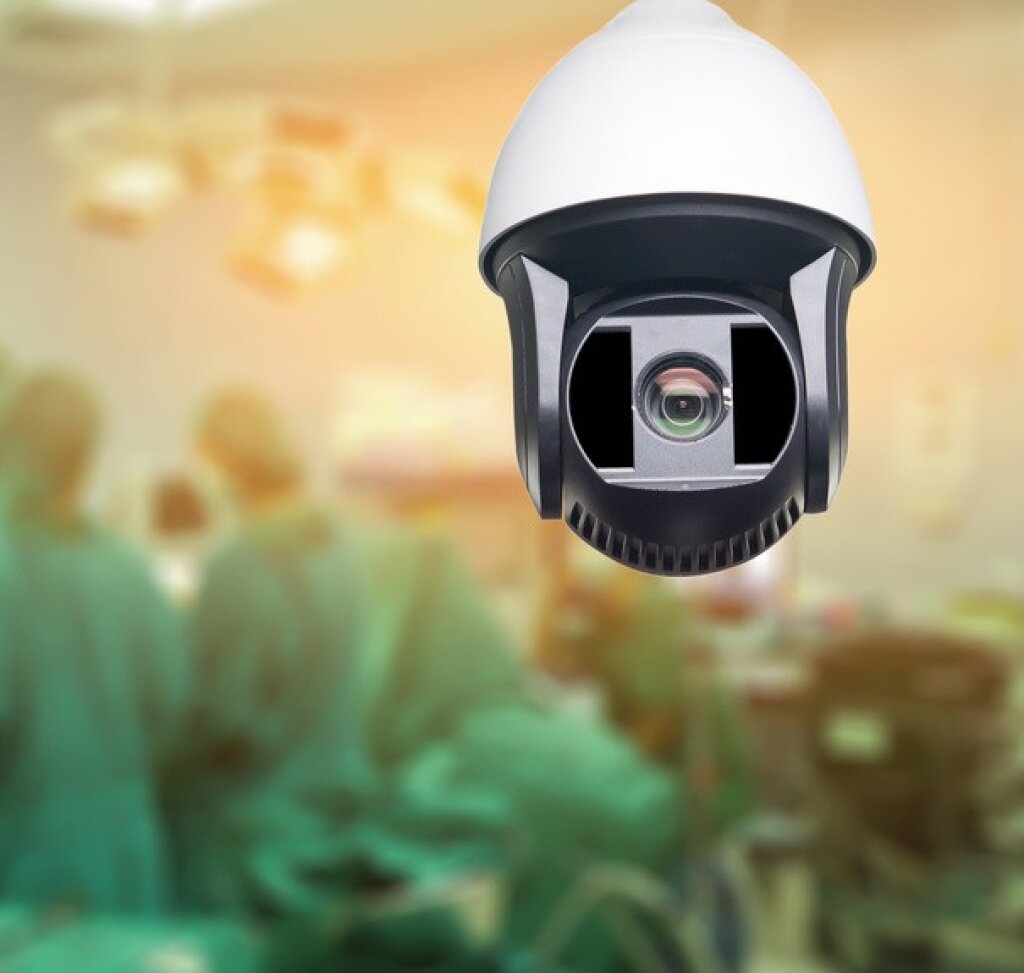Key People Counting Highlights
Accurate data
People counting systems provide businesses with accurate and reliable data on the number of people entering and exiting their premises. This data is essential for making informed business decisions and improving operations.Improved customer experience
By understanding the flow of people within their establishments, businesses can enhance the customer experience. They can identify peak visitor times, optimise staff allocation, and reduce waiting times, ultimately providing a better customer experience.Operational efficiency
People counting systems help businesses improve their operational efficiency. By analysing foot traffic patterns, businesses can optimise their resources, manage queues more effectively and streamline their operations.Retail analytics
People counting systems provide valuable insights into customer behaviour and shopping patterns. Businesses can use this data to analyse conversion rates, track customer numbers and optimise their retail strategies.Foot traffic analysis
People counting systems enable businesses to measure and analyse foot traffic trends. By understanding the flow of people within their premises, businesses can make informed decisions about layout, store design and marketing strategies.
Introduction
Counting the number of people entering and exiting a space is crucial for various businesses and industries. People counting systems provide accurate and reliable data that helps businesses make informed decisions, improve customer experiences, and enhance operational efficiency. From retail stores and shopping centres to public places and public transport, people counting technologies play a vital role in optimising business operations.
Understanding how many people are entering a space, when they enter, and how they move within the space provides businesses with valuable insights. This data enables them to analyse foot traffic patterns, optimise staffing levels, and improve customer service.
By accurately counting the number of people, businesses can make informed decisions about store layout, product placement and marketing strategies.
In this comprehensive guide, we explore the evolution of people counting technologies, the key components of a people counting system, the importance of accurate people counting, and its applications across various industries. We will also discuss the different types of people counting technologies available and provide insights into selecting the right people counting technology for your business. So let's dive in and discover the power of people counting.
Understanding People Counting
People counting is the process of accurately measuring and recording the number of people entering and exiting a specific area or premises. It involves the use of specialised technology, such as people counters, to accurately count and track individuals.
A people counter is a device or system that uses various technologies to count the number of people passing through a specific point. These counting devices can be installed at entrances, exits or at specific checkpoints within a premises. They use sensors to detect the presence of individuals and provide accurate counting data.
Accurate counting is essential for businesses as it provides valuable information about the number of people present at any given time. This data helps businesses make informed decisions about resource allocation, staffing levels and customer service. By accurately counting the number of people, businesses can optimise their operations and improve their overall efficiency.
The Evolution of People Counting Technologies
Over the years, people counting technologies have evolved significantly, leveraging advancements in technology and artificial intelligence. Earlier, manual counting methods were used, but they were prone to errors and lacked accuracy. With the advent of technology, automated people counting systems were introduced, offering more reliable and precise counting capabilities.
Today, there are various technologies used in people counting systems, including infrared sensors, video-based systems and advanced AI-powered solutions. Infrared sensors use thermal imaging to detect the presence of individuals, while video-based systems utilise cameras to capture and analyse video footage. These technologies have greatly improved the accuracy and efficiency of people counting.
Deep learning and AI algorithms have further enhanced people counting capabilities. These advanced technologies enable the system to differentiate between individuals, exclude staff members and accurately count the number of people entering and exiting a premises.
By constantly learning and adapting, these counting systems can provide real-time data and powerful insights for businesses.
Key Components of a People Counting System
A people counting system consists of several key components that work together to accurately count and track individuals. The main component is the sensor, which is responsible for detecting the presence of people and capturing the necessary data.
The sensor can be in the form of infrared sensors or cameras, depending on the technology used. These sensors are strategically placed at entrances, exits or specific checkpoints within a premises to ensure accurate counting.
Accuracy is a crucial factor in people counting systems. The sensors must be able to differentiate between individuals, exclude staff members and accurately count the number of people. This accuracy is achieved through advanced algorithms and AI technologies that analyse the captured data.
The data collected by the people counting system is known as footfall data. This data provides insights into the flow of people within a premises, including peak visitor times, popular areas and overall foot traffic trends. Businesses can use footfall data to optimise their operations, improve customer experiences and make informed decisions.

Importance of Accurate People Counting
Accurate people counting is of utmost importance for businesses across various industries. It provides valuable data that can be used to make informed business decisions and improve overall performance.
One of the key benefits of accurate people counting is its impact on sales conversion rates. By accurately tracking the number of people entering a retail store, for example, businesses can analyse conversion rates and make adjustments to their marketing strategies or store layout to optimise sales.
Accurate people counting also helps businesses track customer numbers and analyse overall foot traffic trends. This data provides insights into customer behaviour and preferences, enabling businesses to tailor their offerings and services to meet customer needs.
Overall, accurate people counting plays a crucial role in understanding customer behaviour, improving operational efficiency and making data-driven decisions that contribute to the success of a business.
Enhancing Customer Experience
Accurate people counting systems contribute to enhancing the customer experience in various ways. By analysing foot traffic patterns and customer flow, businesses can optimise their staff allocation and improve customer service.
For example, in shopping centres, accurate people counting data can provide valuable insights into busy periods and peak visitor times. This information allows businesses to allocate staff members strategically to ensure prompt assistance and efficient service.
Accurate people counting also helps businesses identify popular areas or sections within their premises. By analysing foot traffic trends, businesses can optimise their store layout, place popular products in accessible areas and create a seamless shopping experience for customers.
Improving Operational Efficiency
Accurate people counting systems are instrumental in improving operational efficiency for businesses. By analysing foot traffic patterns and customer flow, businesses can optimise their operations and streamline their processes.
For instance, in queue management, accurate people counting data enables businesses to predict and manage queue lengths more effectively. By understanding peak visitor times and analysing wait times, businesses can allocate resources appropriately, optimise staffing levels and reduce customer frustration.
Moreover, accurate people counting data helps businesses optimise their overall operations. By analysing foot traffic trends, businesses can identify bottlenecks, optimise store layout, and improve the overall flow of customers within their premises. This leads to smoother operations, improved customer satisfaction and increased efficiency.
Applications of People Counting Across Industries
People counting technology finds applications across various industries, enabling businesses to make data-driven decisions and improve their overall performance.
In public places, such as museums and galleries, accurate people counting helps in managing visitor flow, analysing exhibition success and optimising operations. By understanding visitor numbers and flow patterns, businesses can enhance visitor experiences and allocate resources effectively.
In retail stores, people counting systems provide valuable insights into customer behaviour, conversion rates and overall foot traffic trends. This data helps businesses optimise their store layout, track customer numbers and improve their overall retail strategies.
In public transport, accurate people counting enables transportation authorities to monitor passenger flow, optimise operations and improve service planning. By understanding passenger numbers and flow patterns, authorities can allocate resources effectively and enhance the overall passenger experience.
Retail Analytics and Store Performance
Accurate people counting plays a crucial role in retail analytics and store performance analysis. By analysing foot traffic patterns and customer flow, businesses can gather valuable data to assess their store's performance and make informed decisions.
Retail analytics involves the collection and analysis of data related to customer behaviour, conversion rates, and overall store performance. People counting systems provide the necessary data to analyse foot traffic trends, track customer numbers, and calculate conversion rates.
Heat maps generated from people counting data provide visual representations of customer flow within a store. These heat maps help businesses identify popular areas, assess the effectiveness of product placements and optimise store layout to maximise customer engagement.
By leveraging the insights provided by people counting systems, businesses can gain a deeper understanding of their store's performance, identify areas for improvement, and make data-driven decisions to enhance customer experiences and drive sales.
Maximising Safety in Public Spaces
Accurate people counting systems play a crucial role in maximising safety in public spaces, especially in the current context of social distancing and public safety measures.
By accurately counting the number of people entering a premises or a public space, businesses and authorities can ensure compliance with social distancing guidelines. Accurate people counting data enables businesses to manage and control the number of people present in a space, ensuring that occupancy limits are not exceeded.
Moreover, accurate people counting helps in monitoring crowd density and managing crowd control effectively. This is particularly important in events and public gatherings where large crowds are expected.
By having high accuracy people counting systems in place, businesses and authorities can ensure public safety and take necessary measures to prevent overcrowding.
Event Management and Crowd Control
People counting systems play a crucial role in event management and crowd control. Accurate counting of people entering and exiting an event helps in ensuring the safety and security of attendees.
By accurately tracking the number of people present, event organisers can manage crowd density and prevent overcrowding. This enables them to make informed decisions about venue capacity, allocate resources effectively and ensure a smooth and safe experience for attendees.
People counting systems also help event organisers analyse crowd flow and movement patterns. By understanding how people move within an event venue, organisers can optimise event layouts, plan for adequate facilities and enhance the overall event experience.
Accurate people counting systems are essential for effective crowd control and event management, enabling organisers to provide a safe and enjoyable experience for all attendees.

Selecting the Right People Counting Technology
Selecting the right people counting technology is crucial for businesses to ensure accurate and reliable counting data while addressing privacy concerns.
There are various people counting technologies available, including infrared sensors and video-based systems. Infrared sensors use thermal imaging to detect the presence of individuals, while video-based systems utilise cameras to capture and analyse video footage.
Businesses should consider factors such as accuracy, ease of installation, scalability and privacy implications when selecting a people counting technology.
High accuracy and reliability should be top priorities to ensure accurate counting data. Additionally, businesses should ensure that the chosen technology aligns with privacy regulations and provides adequate protection for personal information.
Infrared Sensors vs. Video-Based Systems
Infrared sensors and video-based systems are two commonly used technologies in people counting systems, each with its own advantages and considerations.
Infrared sensors use thermal imaging to detect the presence of individuals and provide accurate counting data. These sensors are highly effective in differentiating between individuals and excluding staff members from the count. They are also less intrusive and can be easily installed in various environments.
Video-based systems use cameras to capture and analyse video footage for people counting purposes. These systems offer the advantage of providing visual data, which can be used for additional analysis such as heat maps. However, video-based systems may raise privacy concerns as they capture visual information that includes personal data.
Both infrared sensors and video-based systems can provide accurate counting data when properly installed and calibrated. The choice between the two technologies depends on factors such as privacy concerns, installation requirements and the specific needs of the business.
Privacy Concerns and Anonymity in People Counting
Privacy concerns are a crucial consideration when implementing people counting systems. Businesses must ensure that personal information is protected and that privacy regulations are adhered to.
Anonymity is a key aspect of people counting systems. The data collected should be anonymised, with no personally identifiable information captured. This ensures that individuals' privacy is protected and that the data cannot be used to identify specific individuals.
Businesses should also consider privacy implications when selecting a people counting technology. Infrared sensors, for example, do not capture visual information and are less intrusive in terms of privacy. Video-based systems, on the other hand, capture visual data and may raise privacy concerns.
By ensuring proper anonymisation of data and addressing privacy concerns, such as a video-redaction-enabled people counting tool, businesses can provide accurate data while respecting individuals' privacy.
Implementing People Counting Solutions
Implementing people counting solutions involves integrating the technology with existing systems and overcoming challenges. Integration with existing systems is crucial for achieving operational efficiency and maximising the benefits of people counting data. However, challenges such as staff exclusion and accuracy issues can arise. Fortunately, there are technical solutions available to address these challenges.
By overcoming these obstacles, businesses can successfully implement people counting solutions and reap the benefits of accurate foot traffic data.
Integration with Existing Systems
Integrating people counting systems with existing systems is key to achieving operational efficiency and maximising the value of the data collected.
By integrating with existing systems such as point-of-sale (POS) systems or customer relationship management (CRM) software, businesses can gain a comprehensive view of customer behaviour and purchasing patterns.
This integration allows for more accurate data analysis and helps businesses make data-driven decisions to improve customer experience and increase sales. Furthermore, integrating people counting systems with security systems can enhance overall safety and security by providing real-time occupancy information in public places.
Overall, integration with existing systems is essential for businesses to leverage the full potential of people counting technology.
Challenges and Solutions
Implementing people counting solutions can come with challenges such as staff exclusion and accuracy issues. Staff exclusion refers to the challenge of distinguishing between customers and staff members when counting people. This can lead to inaccurate footfall data.
To overcome this counting challenge, advanced people counting systems use sophisticated algorithms and deep learning techniques to accurately differentiate between customers and staff members. Furthermore, accuracy challenges can arise owing to environmental factors or technological limitations.
Technical solutions such as improved sensor technology and advanced algorithms help improve the accuracy of people counting systems. By addressing these challenges, businesses can ensure accurate and reliable footfall data for effective decision-making.
Analysing Data from People Counting Systems
Analysing data from people counting systems provides businesses with valuable insights and actionable information. By analysing foot traffic data, businesses can gain a deeper understanding of customer behaviour and preferences. This data can be used to optimise store layouts, improve customer service, and increase conversion rates.
Additionally, analysing occupancy levels allows businesses to better manage crowd control and ensure compliance with social distancing guidelines. By leveraging the data collected from people counting systems, businesses can make data-driven decisions and improve overall operations.
Turning Data into Actionable Insights
Turning data from people counting systems into actionable insights is crucial for businesses to enhance their operations and improve the customer experience. By analysing foot traffic patterns and customer behaviour, businesses can identify opportunities to optimise staffing levels, improve customer service, and develop targeted marketing strategies.
Powerful insights derived from data analysis can inform business operations and drive decision-making. For example, businesses can adjust store layouts based on high-traffic areas or implement promotions during peak visitor times.
By leveraging the data collected from people counting systems, businesses can make informed decisions that lead to improved operational efficiency and an enhanced customer experience.
Case Studies: Success Stories and Lessons Learnt
Case studies provide real-world examples of how businesses have successfully implemented people counting solutions and achieved positive results. By examining these success stories, businesses can gain insights into best practices and lessons learnt.
For example, a retail store may have implemented a people counting system and used the data to optimise store layouts, resulting in increased conversion rates. Another case study may highlight how a transportation hub used people counting data to improve passenger flow management and reduce wait times.
These success stories serve as inspiration for businesses considering the implementation of people counting solutions and provide valuable lessons on how to leverage the technology effectively.
Future Trends in People Counting
The future of people counting technology holds exciting possibilities with the advancement of AI and IoT. Artificial Intelligence (AI) algorithms are becoming more sophisticated, allowing for even more accurate counting and analysis of foot traffic data. AI-powered people counting systems can also provide advanced features such as facial recognition and demographic analysis. Additionally, the Internet of Things (IoT) enables seamless integration of people counting systems with other smart devices, creating a more interconnected and data-driven environment. These future trends in people counting technology promise to revolutionise the way businesses analyse foot traffic, make informed decisions, and enhance the overall customer experience.
Use Case: Successful People Counting Technology in Retail
A large shopping mall implements an AI-powered people counting system to optimise operations and improve customer experience.
Using ceiling-mounted cameras and video analytics, the system accurately tracks foot traffic in real time. Store managers use this data to adjust staffing during peak hours, which reduces checkout wait times.
Mall operators analyse visitor trends to determine high-traffic areas, which improves store placements and marketing strategies. The technology also enhances security by identifying overcrowded zones and optimising emergency evacuation plans.
Over time, data insights lead to increased operational efficiency, improved customer satisfaction and higher revenue. The mall sees a 15% boost in sales and a 20% reduction in staff-related inefficiencies, demonstrating the value of precise foot traffic analytics.
AI and Machine Learning Enhancements
Artificial Intelligence (AI) and machine learning advancements are revolutionising people counting technology. AI algorithms can analyse foot traffic data in real-time, allowing for more accurate and immediate insights.
Machine learning techniques enable systems to continuously improve their counting accuracy by recognising patterns and adapting to changing environments. Deep learning, a subset of machine learning, allows for more sophisticated analysis, such as distinguishing between different types of customers or tracking specific individuals.
These AI and machine learning advances enhance the capabilities of people counting systems, providing businesses with more accurate and actionable insights to improve their operations.
The Role of IoT in Advancing People Counting
The Internet of Things (IoT) plays a critical role in advancing people counting technology. IoT enables seamless integration and connectivity between people counting systems and other smart devices or systems. This integration creates a more interconnected network, allowing businesses to access and analyse real-time foot traffic data from multiple locations.
IoT also enables businesses to monitor occupancy levels in real-time, helping them comply with social distancing guidelines and optimise resource allocation. Furthermore, IoT can enhance the accuracy and reliability of people counting systems by enabling data exchange between devices and ensuring data integrity.
As advanced technologies continue to evolve, the role of IoT in advancing people counting technology will become increasingly significant.
Conclusion
In conclusion, people counting is a pivotal tool for various industries, enhancing customer experiences, improving operational efficiency and ensuring safety.
The evolution of counting technologies like AI and IoT continues to shape the future of people counting systems, offering actionable insights and valuable data.
As businesses seek to optimise their operations and make informed decisions, selecting the right people counting technology and vendor becomes essential. Through accurate data analysis and integration with existing systems, the potential benefits are vast.
Embracing these people counting advancements not only streamlines processes but also paves the way for innovative solutions in an ever-evolving landscape of data-driven decision-making.
Frequently Asked Questions
How accurate are people counting systems?
People counting systems can achieve high accuracy levels, often up to 99%. Advanced technologies such as AI and deep learning algorithms enhance counting accuracy by accurately distinguishing between people and objects, minimising errors. Accurate counting is crucial for businesses to make informed decisions and optimise their operations based on reliable foot traffic data.
Can people counting help in pandemic situations?
Yes, people counting systems can play a significant role in pandemic situations. By monitoring occupancy levels in real-time, businesses can ensure compliance with social distancing guidelines and maintain public health and safety. People counting data can help businesses manage crowd control, limit capacity and make informed decisions to protect customers and staff members.
What are the privacy implications of people counting?
Privacy implications of people counting systems are a valid concern. However, most people counting systems prioritise anonymity and do not capture personal information. Data collected is usually statistical and does not violate privacy regulations. Businesses should have a clear privacy policy and adhere to industry standards to ensure data protection and anonymity.
How can small businesses benefit from people counting?
Small businesses can benefit from people counting systems in various ways. Accurate foot traffic data helps small businesses understand customer behaviour, optimise store layouts, and improve the overall customer experience. By making data-driven decisions based on footfall data, small businesses can increase conversion rates, enhance customer satisfaction and make informed business decisions.
Are there any limitations to people counting technologies?
While people counting technologies have advanced significantly, there are limitations to consider. Different areas may require different counting technologies, and accuracy can vary depending on the environment. Staff exclusion can also present challenges, as distinguishing between customers and staff members accurately can be difficult. However, advancements in technology and algorithms aim to address these limitations and improve overall counting accuracy.
How do people counting systems handle large crowds?
People counting systems are designed to handle large crowds in public places. With their high accuracy and advanced technology, they can effectively manage crowd control and provide real-time data on crowd sizes and movement.
What's the future of people counting technology?
The future of people counting technology lies in advancements such as AI, IoT and deep learning. These technologies will enable more accurate and sophisticated people counting systems, enabling businesses to gather even more valuable insights.
How to choose a vendor for a people counting solution?
When choosing a vendor for a people counting solution, businesses should consider factors such as vendor reputation, product reliability, support services and return on investment. Partner programmes and reseller options can also provide added benefits.
What is the best way to integrate people counting data with other analytics?
The best way to integrate people counting data with other analytics is through data analysis tools that provide metrics and powerful insights. By combining people counting data with other data sources, businesses can gain a comprehensive understanding of customer behaviour and make more informed decisions.




